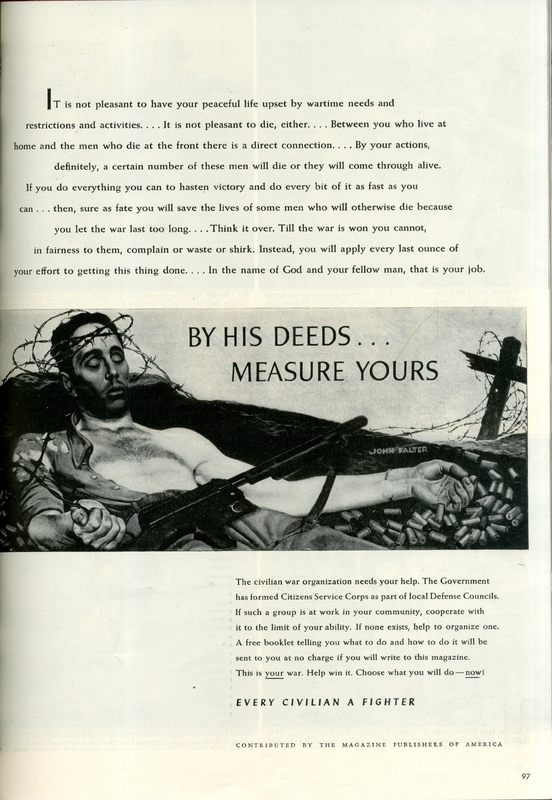Public service advertisement urging total and active support of the war effort by the civilian population by directly tying such efforts to the life and death struggles of the military. The advertisement is striking in its use of religious imagery comparing the soldier's sacrifice to Christ's: it depicts a dead soldier whose head is wrapped in barbed wire, recalling Christ's crown of thorns, and a fence post in the shape of a cross.
Pg. 97
John Philip Falter (1910-1982) was an American artist best known for his many cover paintings for The Saturday Evening Post.
Falter received a major break with his first commission from Liberty Magazine Falter soon discovered that there was much more money to be made in advertising than in other fields of illustration. By 1938, he had acquired several advertising clients including Gulf Oil, Four Roses Whiskey, Arrow Shirts and Pall Mall cigarettes. Falter's work appeared in major national magazines.
In 1943, he enlisted in the Navy, where his talents were applied to the American war effort to spur on recruiting drives. Falter designed over 300 recruiting posters. One popular Falter poster dealt with the loose-lips-sink-ships theme. It showed a broad-shouldered Navy man with the caption, "If you tell where he's going, he may never get there." During this period, he also completed both a series of recruiting posters for the women's Navy, or WAVES, and a series depicting 12 Medal of Honor winners for Esquire.
Falter's first
Saturday Evening Post cover, a portrait of the magazine's founder, Benjamin Franklin, is dated September 1, 1943. That cover began a 25-year relationship with the
Post, during which Falter produced over 120 covers for the magazine until the editors changed its cover format from illustrations to photographs.
https://en.wikipedia.org/wiki/John_Philip_Falter
